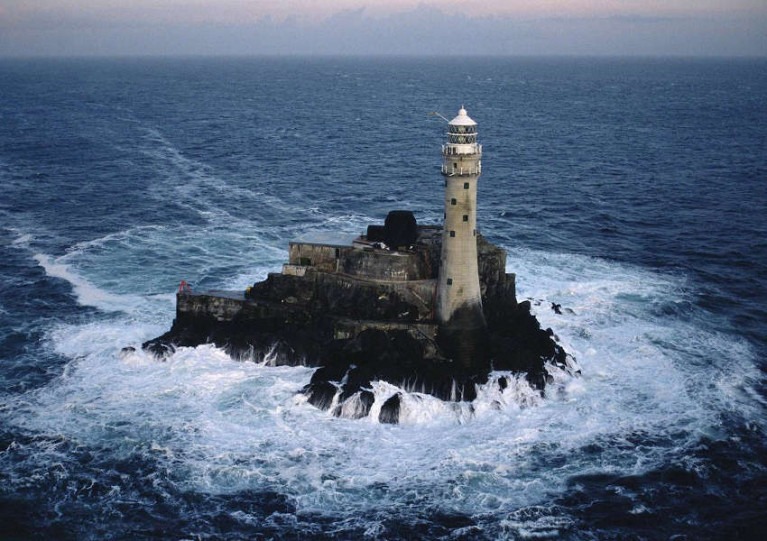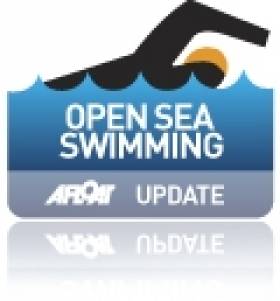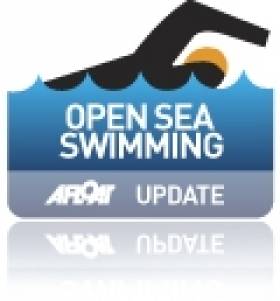Displaying items by tag: Steve Redmond
West Cork Man Swims To Fastnet Rock In 40km Ocean Challenge
West Cork man Steve Redmond has become the first person to swim non-stop from Baltimore Harbour to Fastnet Rock and back, as RTÉ News reports.
The 54-year-old endurance swimmer had to content with jellyfish stings and strong currents in the cold sea water as he made the round trip to the iconic offshore island and lighthouse.
But he was also joined by some curious minke and humpback whales as he strove to complete the 40km challenge in 15 hours and 35 minutes yesterday evening, Monday 20 July.
Redmond is no strange to breaking records, however, as he was previously named World Open Water Swimming’s Man of the Year for 2012 after he completed the Oceans7 Challenge — the sea swimming equivalent of climbing the world’s seven highest peaks.
This is what exhaustion and elation look like, in a 5-second video. Steve Redmond @iswimcoldwater set out at 4.30am from #Baltimore to swim to the #Fastnet and back. 15 hours 35 minutes later he arrived back. “First time it’s been done; now I understand why,” he says... @rtenews pic.twitter.com/cMANhi4IrX
— Paschal Sheehy (@PaschalSheehy) July 20, 2020
Corkman Is Open Sea Swimming's Man Of The Year
#Swimming - Cork swimmer Steve Redmond has been named World Open Water Swimming's Man of the Year for 2012 for his record-breaking triumph in the Oceans7 Challenge last summer.
As the Southern Star declares: "Few individuals in the history of open water swimming have carried the heavy physical, mental, emotional and financial burdens that Stephen Redmond heaped upon his broad shoulders in 2012."
It marked the third year in a row that Redmond was nominated for the international award.
The Corkman had already conquered many of the world's toughest marathon swims - such as becoming the first person ever to swim from Baltimore to Schull around the Fastnet Rock - before setting sights on the Oceans7 Challenge, the open sea swimming equivalent of climbing the world's seven highest peaks.
As previously reported on Afloat.ie, he completed the final leg of the challenge when he crossed Japan's Tsugaru Strait in mid July, beating Australian marathon swimmer Penny Palfrey to the coveted accolade.
Record-Breaking Corkman Completes Oceans7 Challenge
#OPEN SEA SWIMMING - An Irishman has become the first ever person to complete the open sea swimming equivalent of climbing the seven highest peaks, as The Irish Times reports.
Steve Redmond from West Cork completed the final leg of the Oceans7 Challenge when he crossed Japan's Tsugaru Strait with a time of 14 hours 24 minutes on Saturday.
According to the Irish Independent, the 47-year-old father of two - and nominee as World Open Water Swimming Man of the Year in 2011 - began his challenge back in 2009 by swimming across the English Channel.
That feat was followed by crossings of the North Channel between Scotland and Northern Ireland, the Strait of Gibraltar, the San Pedro Channel south of Los Angeles, the Moloka'i Channel in Hawaii, and the Cook Strait between New Zealand's north and south islands.
Aside from braving dangerous currents and the treat of sharks and stinging jellyfish, Redmond had to fend off a number of other challengers for the coveted title - including Australian marathon swimmer Penny Palfrey, who was just one crossing away from the record.
Redmond's now set to return to a hero's welcome in his hometown of Ballydehob this evening.


























































